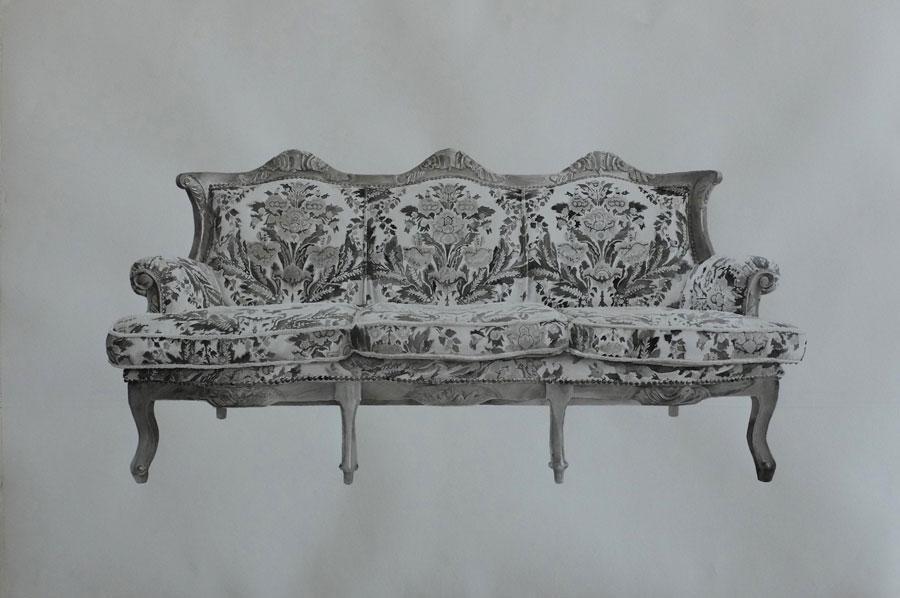
Turkish poet Gülten Akın once wrote: No one stops and tries to understand finesse and delicacy. Then in the same poem she writes: Everyone is using large words to speak and not elegant enough. Akın refers to fineness and the delicacy of life.
According to Akın, life is about details and these delicacies. Can İncekara’s exhibition at Rem Art Space on the other hand, is a perfect fit for this poem as his paintings are about the delicacies of his childhood. He reflects an era with his water paintings on paper and shows us the delicate side of life. The exhibition curated by Özgül Kılınçaslan is a reference to collective memory looking through a personal past of the artist Can İncekara. The works may belong to a part of İncekara’s memory but all together, they present a collective memory of people who were young children during the 1990s in Turkey. In a way, this is also a cultural reference of our past lives.
Works of the artist document his two grandmothers’ apartment. “I visit my grandparents a lot. Once when I was there, I realized the details in these apartments had become my obsession.”
Each detail told a story, according to İncekara, and these stories sum up to become a painting in his mind. Of course, painting each detail on paper with water color is a hard task. These paintings took a year to finish. While in some of the paintings, he shows us parts of his grandparents’ houses, in some, we see belongings such as a wallet or a coat.
According to the artist, these all stand as a symbol of his childhood. İncekara lives in İzmir and has a very close relationship with his grandparents.
“Maybe that is why paintings are about their homes and their belongings. They are both very old and getting older,” he said.
As they get older, İncekara thinks a part of his life is vanishing. That is why he decided to paint all of these details that become a part of his life and visual memory. He painted his grandparent’s coat because the coat was always there and it reminded him of his childhood. On the other hand, the wallet his grandparent used when he was a small child is also a significant memory for him and stands as an important piece in the exhibition. The couch no one ever sat on, except during bayram is another important piece. İncekara shows the viewer his talent in painting the delicate details.
Losing memories of childhood
The paintings are also a way to stand against losing the memories of childhood. By painting the details, such as electric pigs, the details on the glass doors, he somewhat reminds others of their childhood and memories.
“I saw people passing through the gallery stopped by and looked at the paintings. The reason is there and obvious that they see their past in these paintings. The other day, a man told me he still remembers the ornaments on the glass doors and the old style of couches in the past,” said İncekara.
This also gives hope to the artist. Maybe it is comforting to know there are many people feeling the same things and do not want to lose the memory of the past.
However, the works also tells another story about our current lifestyle in Turkey. Even though the old furniture, ornaments and many details seem like they stayed in the past, it is possible to encounter these details each day. In a way, it reminds us to remember what is vanishing and to hold on to it.
In this sense, collecting memories and not giving ourselves up to the ever changing social media culture is an asset. Each day, we encounter many images, however, not all of them have given serious thought on collective memory and details of our lives. That is why İncekara’s meticulous paintings are a chance for us to become aware of collective memory and maybe with our past visual memory.